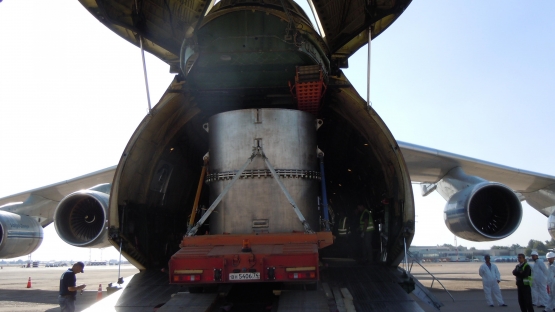Tashkent, Uzbekistan — Uzbekistan became a country free from high enriched uranium (HEU) on 24 September, with the removal of irradiated liquid HEU fuel from a research reactor located at the Radiation and Technological Complex in Tashkent. The HEU has been transferred to the Mayak reprocessing facility in the Russian Federation.
“The liquid HEU removal operation represented the latest accomplishment in a global programme involving the IAEA, the Russian Federation and the United States to assist several countries, including Uzbekistan, in eliminating the risks associated with HEU,” said Peter Hanlon, Assistant Deputy Administrator for the Office of Material Management and Minimization within the U.S. Department of Energy’s National Nuclear Security Administration.
Global collaboration strengthens nuclear non-proliferation
The IAEA is supporting Member States’ efforts to replace HEU with low enriched uranium (LEU) in research reactors worldwide for achieving their non-proliferation objectives. With development in recent years in low enriched high density fuel, it is possible to maintain the performance of many research reactors previously operated with HEU fuel. “This operation represents an important step in efforts to minimize the use of HEU,” said Juan-Carlos Lentijo, Director of Nuclear Fuel Cycle at the IAEA.
Under the umbrella of the Tri-partite (IAEA-USA-Russian Federation) Initiative, also known as the Russian Research Reactor Fuel Return (RRRFR) Programme, the shipment was carried out and completed with the collaboration of all three parties, as well as Uzbekistan.
This shipment from the IIN-3M “FOTON” was the first removal operation of irradiated liquid HEU fuel, and represents a historic milestone for the RRRFR Programme, which has facilitated the transfer of nearly 2160 kilograms of former USSR-supplied HEU from 14 countries to Russia in 61 shipments. Read more about a shipment from Kazakhstan last year. Ten of the 14 countries are now free of HEU fuel. See our photo gallery documenting how the HEU fuel was shipped from the reactor site to the plane carrying it to Russia.
The IIN-3M “FOTON” research reactor was a rare reactor-type in which the fuel and the moderator are mixed together to form a homogenous liquid. It was a research installation that could operate in both steady-state power level or pulsed to different peak power levels, offering a wide range of possibilities for researchers. It had been in operation since 1975, and was used for the testing of semiconductors and other devices.
In April 2012, the Government of Uzbekistan, in agreement with the United States Department of Energy’s National Nuclear Security Administration, requested the IAEA to assist in the development of a decommissioning plan for the IIN-3M “FOTON” research reactor. Based on this plan, the Government of Uzbekistan decided to decommission the reactor along with the rest of the Radiation and Technological Complex and approved the strategy of “immediate dismantling with subsequent unrestricted use of the site.”
Following the removal of the fuel, the second stage of the decommissioning project will now be launched. On July 31, 2015, the IAEA signed two contracts with international consortia led by the Institute of Nuclear Physics in Tashkent, Uzbekistan for the removal of disused radioactive sources and for the decommissioning of the site. These decommissioning works are anticipated to take about 32 months to complete with the support of Uzbekistan and international donors.



